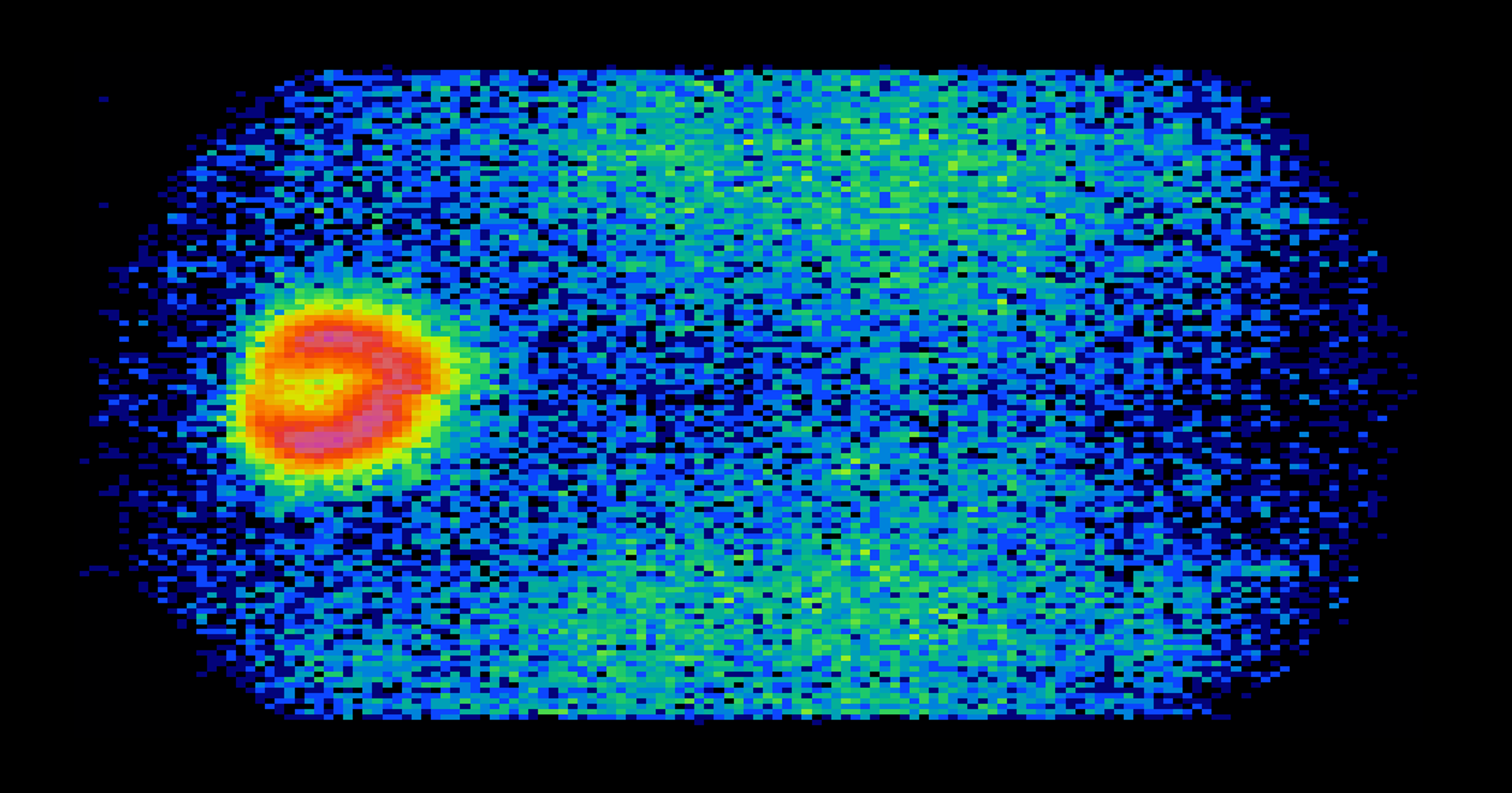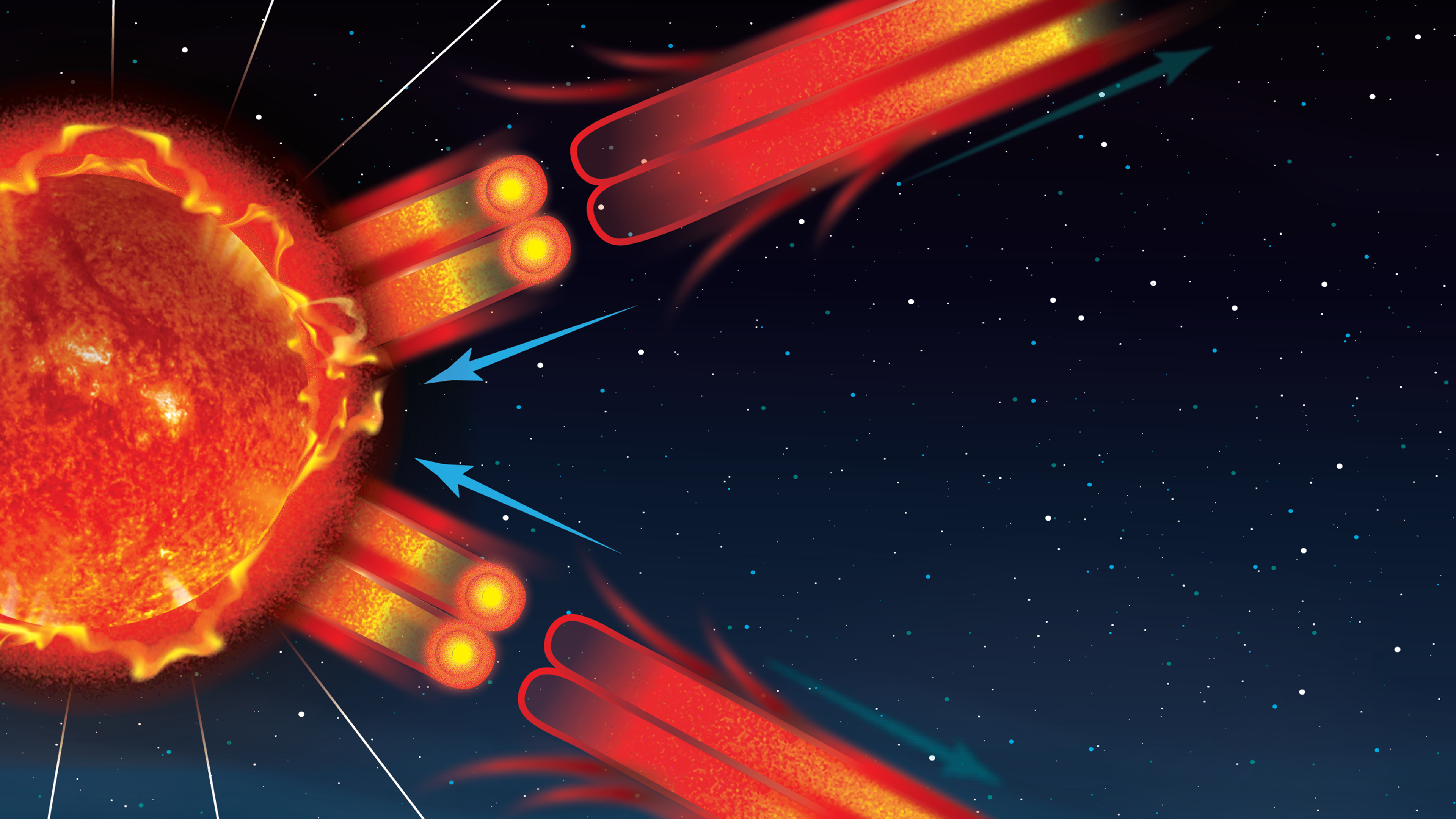PROJECT
Focusing Optics X-ray Solar Imager (FOXSI) sounding rocket
KEY POINTS
This third flight of the FOXSI experiment featured direct-focusing X-ray optics, 3D-printed collimating devices for limiting background, and high-resolution X-ray detectors. This technology will enable high-fidelity X-ray imaging in astronomy and other fields.
X-rays from the Sun help us probe the highest-energy phenomena that occur in our solar system, including solar storms and their origins. The Sun presents some unique challenges to researchers attempting to unravel its high-energy behavior. To deal with these challenges, a sounding rocket experiment team has developed an array of new technologies that can reveal how the Sun emits high-energy radiation, plasma, and particles.
The Sun gives off abundant X-rays from its fiery, multimillion-degree corona (the outermost layer of the solar atmosphere) and poses particular challenges for X-ray imaging. During solar flares, which temporarily heat up the corona locally to many tens of millions of degrees, a multitude of X-rays are radiated into space. Yet the part of this emission that most intrigues solar astrophysicists is the faintest X-ray flux, which can reveal how solar flares are triggered, how they transfer energy, and how they accelerate particles up to extraordinarily high energies.
Solar flares are often associated with coronal mass ejections, in which huge volumes of plasma are kicked out of the corona and sent off into interplanetary space. When Earth-directed, these ejections can cause geomagnetic storms with the potential to threaten spacecraft, astronauts, and power grids. Understanding the origins of these events is therefore of the utmost importance. For this reason, solar astrophysicists are searching for faint X-rays emanating from the hidden sites from which these events originate to understand the keys to energy release in the corona. To observe this faint emission in the tumultuous context of a solar flare is a demanding requirement for any X-ray technology.
The Focusing Optics X-ray Solar Imager, or FOXSI, is a sounding rocket experiment that takes a novel approach to this challenge. Traditional reflecting or refractive telescopes do not work for X-rays because the rays tend to simply pass through or absorb in the medium. Therefore, past missions had to use indirect methods to image high-energy X-ray sources in the sky. However, it is possible to reflect X-rays using a mirror with a small angle of incidence and a perfect shape; this method is used by NASA’s Nuclear Spectroscopic Telescope Array (NuSTAR) mission as well as several instruments that operate at lower energies. The challenge for FOXSI was to take this technology and adapt it for observing the Sun, which produces a wider range of brightnesses and more complex, intricate sources than any other astronomical object.

To accomplish this task, FOXSI features several novel, cutting-edge technologies. The heart of FOXSI’s technology is its reflecting mirrors that are specially designed for solar observations. PI, Dr. Lindsay Glesener, explains the FOXSI approach: “Rather than just building a bigger or improved mirror, this new focusing technology is an entirely transformative way of measuring X-rays from the Sun.” FOXSI’s mirrors are produced at NASA’s Marshall Space Flight Center using a “fast replication” process that involves electroforming nickel onto carefully shaped and polished molds. Use of these molds means that no further “hand polishing” must be performed on each individual mirror, drastically cutting down the effort and expense needed to produce the mirror sets. For its third flight, FOXSI-3 also included new collimating structures to reduce instrumental background. These collimators, produced by 3D-printing
The FOXSI-3 team includes postdoctoral researchers, graduate students, and undergraduate students. These young researchers took advantage of a rare opportunity to build, test, and fly a NASA experiment, participated in all aspects of the preparation and flight, and are now the lead scientists analyzing the results. a honeycomb structure out of a titanium alloy, were designed by the National Astronomical Observatory of Japan and Nagoya University and were fabricated by the Toray company of Japan.
Lastly, FOXSI-3 features three different kinds of X-ray cameras. One camera made of silicon and another made of cadmium telluride are both designed to measure the highest energy X-rays one by one, carefully recording positions, energies, and times of every single X-ray that enters the instrument. The third camera, called the Photon Energy Imager in soft X-rays (PhoEnIX), does the same for X-rays of lower energies, which is an even harder job; to measure the bright X-ray emission at these energies, a fast camera rate is needed.
Using these new technologies, FOXSI-3 flew successfully on September 7, 2018, and produced the first focused images of the Sun across a wide range of energies in “photon counting” mode – in which every single X-ray is individually recorded and analyzed. This method of measurement will allow solar astrophysicists to achieve their goal of measuring the bright X-ray emission from solar flares, while simultaneously capturing the faint traces of energy release and particle acceleration that instigate the events.
When this technology is eventually realized on a spacecraft mission, scientists will be able to tell how solar eruptions start, how the vast amounts of energy are transferred, and how particles are accelerated and escape the Sun. The technology pioneered on this sounding rocket experiment is already forming the basis of plans for a FOXSI spacecraft. In addition, the technology developed for FOXSI will transfer to other fields, allowing for high-energy X-ray mirrors and cameras to be used for medical and other applications.
FOXSI-3 is a collaboration between the University of Minnesota, University of California Berkeley, NASA Marshall Space Flight Center, NASA Goddard Space Flight Center, University of Tokyo/Kavli Institute for the Physics and Mathematics of the Universe, Nagoya University, Tokyo University of Science, Japan Aerospace Exploration Agency /Institute of Space and Astronautical Science, and the National Astronomical Observatory of Japan. More information is available at foxsi.umn.edu.
SPONSORING ORGANIZATIONS
Heliophysics Division’s H-TIDeS Program
PROJECT LEAD
Dr. Lindsay Glesener, University of Minnesota


































